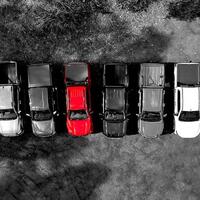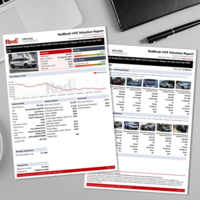The RedBook Insider: PHEVs in Australia Post-FBT Concession: Down, But Not Out
With the removal of Fringe Benefits Tax (FBT) concessions for Plug-in Hybrid Electric Vehicles (PHEVs) on April 1, 2025, Australia’s vehicle market faces a pivotal shift. While much of the narrative around new energy vehicles (NEVs) has centred on the ascendancy of Battery Electric Vehicles (BEVs) and Hybrid Electric Vehicles (HEVs), the future of PHEVs remains less certain—yet potentially more relevant than it appears at first glance.
Market Transition: NEVs Rise as ICE Declines
RedBook forecasts show Australia’s NEV penetration will surge from just 8% in 2021 to 35% by the end of 2025. Internal Combustion Engine (ICE) vehicles are expected to fall to 65% market share, down 27 percentage points in just four years. The biggest gainers have been HEVs, jumping 13 points, while BEVs and PHEVs gained 9 and 5 points respectively.

Source: Vfacts
However, BEV growth appears to be flattening, particularly as supply catches up with demand, pushing prices down and margins tighter. Meanwhile, HEVs continue to find favour among cost-conscious and infrastructure-aware consumers.
PHEVs, though growing more slowly, could be at the start of a second act – especially in Australia's regional and rural contexts, where charging infrastructure lags behind urban centres.
The Regional Case for PHEVs
RedBook’s outlook points to a persistent role for PHEVs, and that argument gains strength when factoring in Australia’s geography. In many regional cities and rural areas, fast-charging infrastructure remains underdeveloped, and range anxiety continues to deter potential BEV buyers. PHEVs offer a practical compromise: clean electric driving for short urban commutes, and ICE backup for long-distance travel. This dual capability could become increasingly valuable outside metro areas, where infrastructure rollout will likely take longer.
Notably, trends in China – leading bellwether for global NEV adoption – show that newer PHEVs are arriving with significantly extended electric-only ranges, often exceeding 100 km. If this evolution continues, Australian consumers could view next-gen PHEVs less as transitional tech and more as long-range electric vehicles with built-in flexibility.
Policy Still Matters: Election-Year Uncertainty
The removal of FBT exemptions will undoubtedly dampened demand for PHEVs, particularly among fleet buyers and salary-package users who previously benefited from generous tax offsets. The federal policy shift toward zero-emissions vehicles has tilted the playing field in favour of BEVs, potentially sidelining PHEVs despite their practical benefits in regional and transitional markets.
But the policy environment is anything but settled. With the federal election looming, automotive policy has entered the campaign spotlight. The Coalition pledging to abolish the proposed New Vehicle Efficiency Standard (NVES), controversially labelled the “ute tax,” arguing it unfairly penalizes larger vehicles like utes and 4WDs – many of which are work vehicles and disproportionately relied upon in regional Australia.
This potential rollback of efficiency standards could have significant consequences. If implemented, the NVES would push manufacturers toward selling more low- and zero-emission vehicles – including BEVs, PHEVs, and efficient hybrids – while penalizing emissions-heavy models. Its removal could ease pressure on ICE utes and SUVs in the short term but risk stalling Australia’s transition to cleaner technologies.
For PHEVs, the outcome is mixed. On one hand, without NVES pressure, automakers may deprioritize PHEV supply to Australia in favour of more profitable markets with stricter emissions rules. On the other, if large vehicle segments like utes escape emissions regulation, PHEVs could emerge as a lower-emission compromise, offering practicality without demanding a fully electrified infrastructure.
In either scenario, government intervention or its absence remains one of the most powerful levers shaping PHEV viability in Australia.
Price Pressure, Supply, and the Role of China
With new brands, especially from China, entering the Australian market at speed, competition is intensifying. This will likely put further downward pressure on vehicle pricing and compress manufacturer margins. PHEVs may face a squeeze here, as they tend to cost more to produce due to their dual powertrains. However, Chinese automakers have proven adept at undercutting on price while delivering feature-rich models – including advanced PHEVs with BEV-like capabilities.
Relevance Through Reinvention
The removal of FBT concessions undoubtedly poses challenges for PHEVs in the short term, but their utility in regions with limited infrastructure and their potential in key segments like utes suggest they still have a place in Australia’s electrification journey. As global PHEV technology improves and consumer use cases diversify, Australia may see these vehicles reemerge – not as a stepping stone, but as a uniquely suited solution in a complex and varied market.
Recent Posts
-
 The RedBook Insider: Emerging Divergence in the Popular 4x4 Ute Segment: Heavy-Duty Performance vs Hybrid-Electric Innovation30th September 2025
The RedBook Insider: Emerging Divergence in the Popular 4x4 Ute Segment: Heavy-Duty Performance vs Hybrid-Electric Innovation30th September 2025 -
 The RedBook Insider: Introducing RedBook LIVE: Smarter, Faster, and More Accurate Automotive Intelligence30th September 2025
The RedBook Insider: Introducing RedBook LIVE: Smarter, Faster, and More Accurate Automotive Intelligence30th September 2025 -
 The RedBook Insider: Introducing the RedBook Insider Webinar Series30th September 2025
The RedBook Insider: Introducing the RedBook Insider Webinar Series30th September 2025
